Predictions About the Future That History Proved Way, Way Wrong

Predictions about the future lives of humanity are everywhere, from movies to news to novels. Some of them prove remarkably insightful, while others, less so. Luckily, historical records allow the people of the present to peer into the past and revisit some of the zanier predictions.
All of the following predictions have proven absolutely, irrefutably wrong. Some are laughably, ridiculously incorrect, while others seem like fantastic daydreams — possibilities that time forgot. Fortunately, there is still enough time for some of them to come true.
No Home Computers — Ken Olsen
It must be terrible to earn the honor of ‘wrongest person in the history of the world,’ but Ken Olson seems to hold that title currently. Though he was the founder and CEO of a technology company, it seems his faith in new and upcoming technologies was sadly limited.
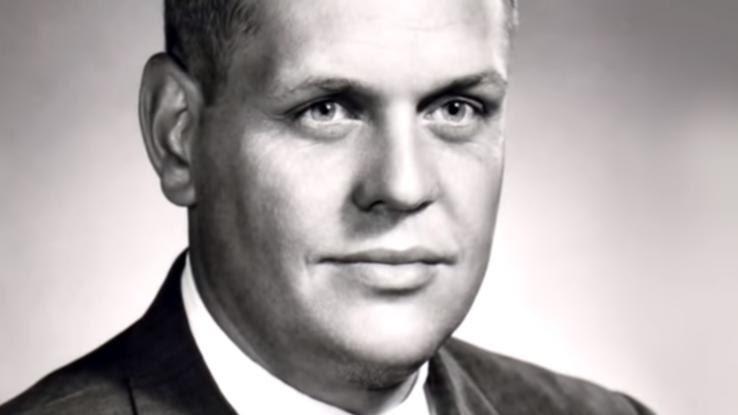
In 1977, right before the first inklings of the personal computer craze, he remarked, “There is no reason for any individual to have a computer in his home.” Not only do we now have computers in our homes, but we carry them around in our pockets!
Worth Its Weight in Steel? — Thomas Edison
Depending on who you talk to, Thomas Edison was either one of America’s greatest inventors or one of its greatest frauds. Based on several Edison predictions that have since been proven to be unfounded and untrue, one thing is clear: for all he could brighten city streets, he couldn’t illuminate the course of the future
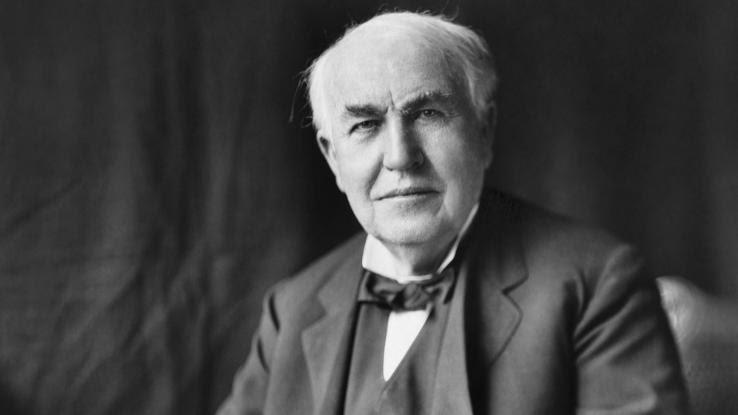
One prediction in particular is both extraordinarily humorous and slightly unsettling. Edison believed that steel would become more valuable than gold, and that future homes would be filled with steel products — even baby cradles would be cold, hard steel. Obviously, that’s not true.
One Big Toe — Richard Clement Lucas
Medical history is full of crazy ideas, and predictions for the field are no exception. One surgeon, a man named Richard Clement Lucas, made a rather bizarre assertion to students and fellows during a lecture to the Royal College of Surgeons in 1911.

He prophesized, “Human beings in the future will become one-toed. The small toes are being used less and less as time goes on, while the great toe is developing in an astonishing manner.” So, basically, Lucas thought we’d go the way of the horse and develop a single, gigantic toe. Ew.
Movies Are a Fad — Charlie Chaplin
Charlie Chaplin is often remembered as one of the greatest silent-film actors and entertainers in the world. He also wrote and directed some of the most memorable and beloved classic films. Despite all of that, however, he had some strange ideas about ‘the pictures.’

He once said, “Movies are a fad. Audiences really want to see live actors on a stage.” For someone who made his career in motion pictures, he sure didn’t have faith in the medium. While musical and live theater has made a slight comeback in recent years, the silver screen is still king.
Internet Shopping Will Never Replace Malls — Clifford Stoll
Because of online retailers, fewer and fewer people are going to malls and physical retail locations to satisfy their shopping needs. This is precisely the opposite of what Clifford Stoll assured readers would happen in a 1995 article of Newsweek.

He blatantly told audiences, “The truth is no online database will replace your daily newspaper.” Also, “Nicholas Negroponte, director of the MIT Media Lab, predicts that we’ll soon buy books and newspapers straight over the Internet. Uh, sure.” Your sarcasm only makes this prediction fail funnier, Mr. Stoll.
TV Will Never Last — Darryl Zanuck
The former head of Twentieth-Century Fox is infamous for making one of the all-time worst predictions in the history of humankind. in 1946, he publicly shared his doubt about the longevity of the television set. Like a know-it-all that actually knows very little, he said, “Television won’t be able to hold … after the first six months.”

As if he were twisting the knife even deeper into his own back, he slyly added that “people will soon get tired of staring at a plywood box every night.” He was a little right. TVs soon ditched the furniture look.
Legs for Days — Dorothy Roe
According to 1950’s newspaper editor Dorothy Roe, women in the year 2000 would resemble Wonder Woman and Xena more than Lady Gaga or Emilia Clarke. She believed that women of the future would all be six feet tall and extremely muscular.

Roe writes, “She will be more than six feet tall, wear a size 11 shoe, have shoulders like a wrestler and muscles like a truck driver.” If women of 2020 were expected to be this large and aggressively built, what were men supposed to have been like? Literal giants?
Hose Down the House — Waldemar Kaempffert
The duties of a housewife were once manifold. In addition to keeping the house clean and tidy, housewives were expected to do the shopping, mend and wash a family’s clothing, cook all of the meals and manage the family budget. It was a tough job, and it still is today.

That’s why Kaempffert’s vision of a washable, hoseable house seems just as attractive today as it did in 1950. The futurist wrote, “Furniture (upholstery included), rugs, draperies, unscratchable floors — all [would be] made of synthetic fabric or waterproof plastic.” Sure, easy to clean. But not very comfortable.
150 Years Old — F.E. Smith
While modern medical techniques and treatments have extended the lives of millions if not billions of people, they have yet to produce an average lifespan of 150 years. This fact goes against what British politician and close friend of Winston Churchill F.E. Smith said about the matter in 1930.

Smith wrote that within 100 years — 2030 at the latest — people would enjoy an average lifespan of up to 150 years. Smith wrote, “…how will youths of 20 be able to compete…against vigorous men still in their prime at 120?” We may never know.
The iPhone Is Temporary — Steve Ballmer
People often say that green is the color of envy. Well, Steve Ballmer — the former CEO of Microsoft — must have looked like the Wicked Witch of the West when he snatched an employee’s iPhone out of their hand and pretended to stomp it into tiny little pieces.
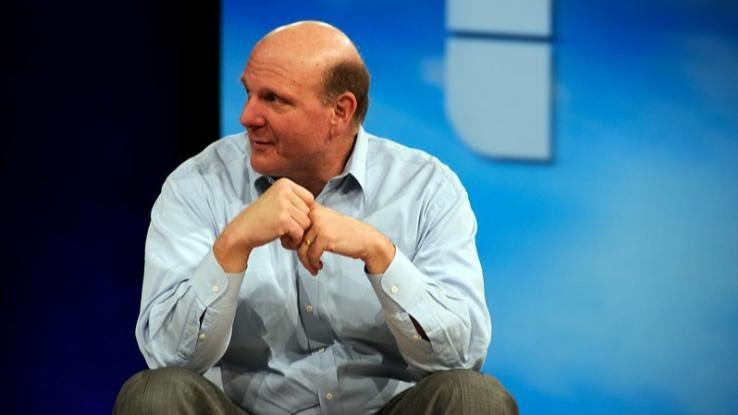
It was probably a long-belated reaction to how wrong he ended up being about the iPhone’s success. When the Apple phone was initially released, Ballmer told the press, “There’s no chance that the iPhone is going to get any significant market share. No chance.” Sore losers are no fun.
Ape Chauffeurs — RAND Corp.
While self-driving cars continue to undergo further testing and development, there’s little chance at present of making it to your destination without lifting a finger. Unless, of course, a burly ape chauffeur is driving you around.

In 1967, some of the country’s smartest and most well-informed futurists and scientists pooled their resources to make predictions about life in the year 2020. One such guess by the RAND Corporation stated that humans would be breeding intelligent animal servants, such as ape chauffeurs. Where’s our orangutan butler?
Y2K Is the End of Everything — John Hamre
As the 1990s came to a close, a new and mysterious threat took the world by storm: Y2K. Coined by programmer David Eddy, the idea came from a misunderstanding of how easy it is to upgrade a computer’s software.

John Hamre, the United States Deputy Secretary of Defense in 2000, was put in charge of handling both the government’s computer security and the public’s concern during the year change. He thought that the fallout from Y2K might be bad enough for martial law to be declared!
Humans on Mars — Peter Schwartz and Peter Leyden
1997 was an exciting year. The domain name for Google was registered, Steve Jobs returned to Apple and the first Grand Theft Auto game hit store shelves. It was a time of hope and anticipation, and many wondered how quickly new technologies would change the world. But perhaps Wired writers Peter Schwartz and Peter Leyden were a little too optimistic.
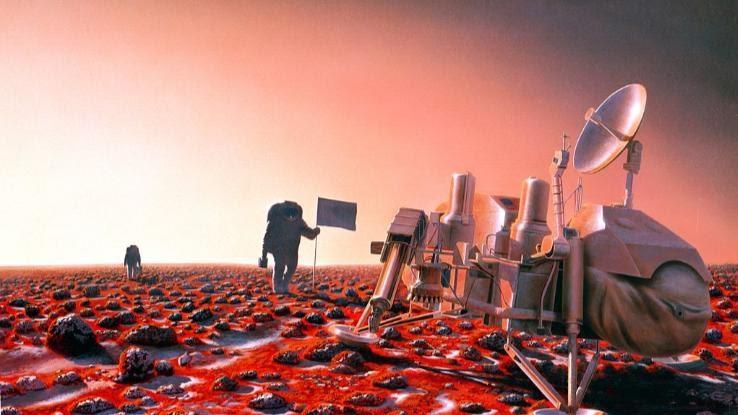
They theorized that human beings would physically arrive on Mars by 2020. While there are some plans to make that happen in the future, so far, only fictional characters in film, television and literature have visited the red planet.
Flying Cars — Popular Mechanics
Since the time of the Wright brothers and Henry Ford, people have dreamed of a way to escape automobile traffic and take to the skies in a personal vehicle. Who doesn’t want to trade gridlock for soaring through the clouds?.
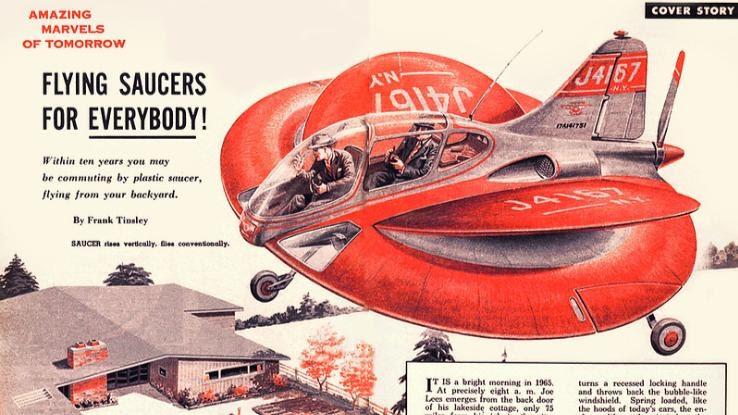
However, concept flying cars have never made it past the conceptual stage, and consumers have been teased and tormented by the promise of airborne cars since at least the 1950s. Back then, Popular Mechanics declared that the age of the flying car was just around the corner. Which corner is that, again?
Floating Houses — Arthur C. Clarke
Long before Pixar released Up, people wondered about the feasibility of floating real estate. Arthur C. Clark was an extraordinary science-fiction writer, and he wrote a wonderfully fictional prediction concerning floating homes.
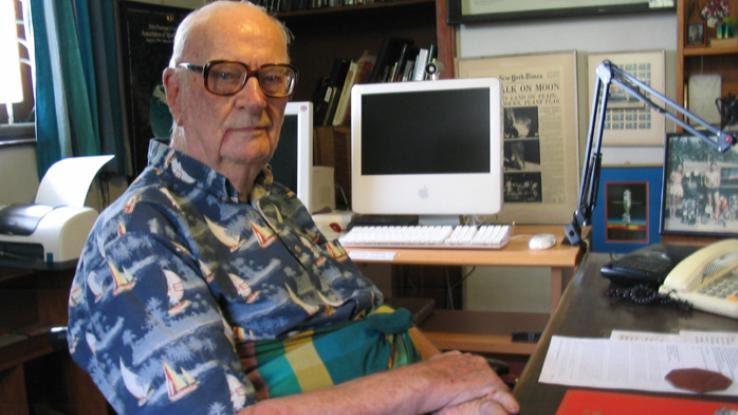
He stated that the home of the future would be “an untethered paradise.” While RVers may be able to park their secondary homes nearly anywhere, contemporary homeowners are still stuck in place.
Tooth Banks — Lester David
Dental care remains one of the most expensive forms of healthcare in the modern world. Many people only visit their dentist when absolutely necessary, which can end up costing patients far more than a few annual cleanings and check-ups.

That’s why the idea of a tooth bank is a pretty attractive one. In 1947, journalist Lester David proposed that in addition to life-saving blood banks, there would be ‘tooth banks’ by the start of the new millennium, making false teeth or dentures obsolete. We’re still waiting.
Deep-Sea Cities — Isaac Asimov
Isaac Asimov whole-heartedly believed that the human population would reach enormous numbers by the 2000s, necessitating unlikely but crucial habitation of the freezing poles, arid deserts, and the deep, blue ocean. His idea of life in 2014 is starkly different from reality.

He said that ” … 2014 will see a good beginning made in the colonization of the continental shelves. Underwater housing will have its attractions to those who like water sports, and will undoubtedly encourage the more efficient exploitation of ocean resources, both food and mineral.” Um, not so much.
Fewer Letters — John Elfreth Watkins Jr.
This prediction is over a century old and still has yet to come true. Proposed in 1900 as part of the Ladies’ Home Journal, this prediction foretold three deaths. The victims? The English letters C, X, and Q. That’s right — futurist John Elfreth Watkins Jr. thought that the alphabet might soon get a downgrade.

He wrote, “There will be no C, X or Q in our everyday alphabet. They will be abandoned because unnecessary [sic]. Spelling by sound will have been adopted … ” He was half-right. Language has continued to change and grow more phonics-based, but we still have all our letters!
2020 Nanomobility — Michael J. O’Farrell
Have you ever heard of the Nanomobility Era? No? That’s probably because it never came to pass. Michael J. O’Farrell has worked in the tech industry since 1985. He’s seen the rise of personal home computers, the Internet and smartphones, but he doesn’t have a great handle on possible technology timelines.
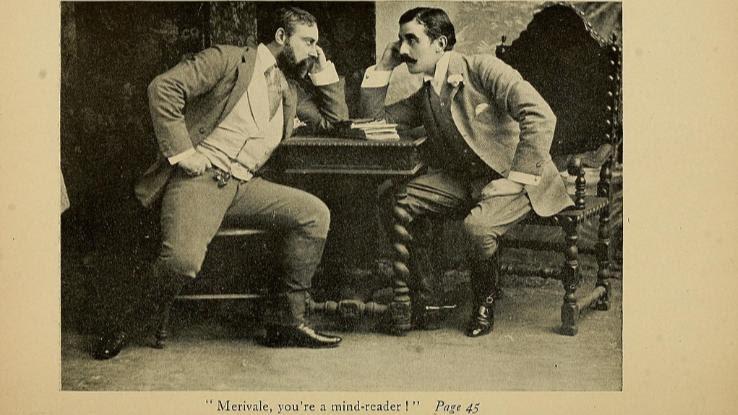
O’Farrell produced yet another failed prediction drawn from the pages of Shift 2020. He said, “In the pending nanomobility era, I predict telepathy and teleportation will become possible by the year 2020 — with both commonplace by 2040.” But Scotty isn’t quite ready to beam us up — yet!
Forced Vegetarianism — Gustav Bischoff
Not every failed prediction comes from a place of hubris or insanity. Some are the product of cold, hard calculation and logic. Gustav Bischoff, the president of the American Meat Packers Association, told a New York Times reporter in 1913 that the future of meat was in the hands of the wealthy.

He said that future Americans would likely survive “on rice and vegetables” due to a shortage of meat. The man greatly underestimated the centuries-old appeal of a hamburger, fried chicken or pork chops. If Bischoff’s prediction had become real, there’d be no Arby’s and no McDonald’s. No thanks.
Miracle Pill — Francois Ody
Modern consumers are wise enough to know that any product with the word ‘miracle’ attached to it is probably a hunk-of-junk scam. Predicting that the entire medical profession could be made obsolete with the manufacture of so-called ‘miracle pills’ is about as accurate as finding out that humans really can survive on a diet of only water and air.

Francois Ody was a French surgeon with big ideas. He envisioned a near-future where ill people could consume a “substance which, in the form of a capsule, will capture the sources of energy that will bring recovery within hours.”
Phone Clothing — Ray Kurzweil
Many of futurist Ray Kurzweil’s predictions have come to pass. His batting average in terms of correct and accurate assessments of the future is higher than almost any other modern-day futurist’s, but that doesn’t mean he hasn’t been wrong about a few things.

Take, for example, his prediction that cell phones would become integrated into clothing. Sure, people are pretty attached to their phones, but no, your pants or sweater probably can’t connect to your phone via Bluetooth and broadcast some sweet jams. It’s probably for the best – what if your jeans started blasting some questionable material?
Therapy Bot — Ariane Van De Ven
Recent predictions can be just as wrong as ones made decades or more ago. Ariane Van de Ven, a global trends expert, made a pretty brave prediction about life in 2020 back in 2014. Her prediction was published as part of Shift 2020, a book about technology and life in the year 2020.

She wrote, “There will be more robots used as therapists, companions, assistants, and even friends to help people in their every day.” So far, the closest thing to a robot that most people have in their homes is Alexa.
A Helicopter for All — Popular Mechanics
Sports coupes are so passe, right? What everyone needs is a jet-powered, two-seater personal helicopter. At least, that’s what Popular Mechanics thought in its February 1951 issue. Showcasing the abilities and speed of the “Hiller Hornet,” a personal aircraft that cost a whopping $5,000, the magazine claimed that such transportation would soon become common.

Unless you live next to multi-millionaires with private helipads and tons of gadgets, it’s unlikely that your neighbors are operating their own tiny helicopters. This fad never managed to take off (pun intended).
Nuclear-Powered Vacuum Cleaners — Alex Lewyt
A nuclear-powered vacuum cleaner sounds like something out of the Fallout universe, but according to the president of the Lewyt Vacuum Cleaner Company in 1955, “Nuclear powered vacuum cleaners will probably be a reality within 10 years.” 1965 has come and gone. Where are the atomic vacuum cleaners, huh?

Then again, putting atomic energy into the hands of consumers is a great way to cause disasters of epic proportions, so it’s probably for the best that this prediction ended up being a bust.
Internet Supernova — Robert Metcalfe
Emerging technologies tend to generate weird and wonky predictions. In 1995, Ethernet creator Robert Metcalfe made a bold prediction concerning the future of the newly prospering Internet.

He said that the Internet “will soon go spectacularly supernova and in 1996 will collapse.” He was so confident in his prediction that he vowed to eat his own column in Infoworld should he happen to be wrong. Like a good sport, he did munch down on some printed paper near the end of 1996.
Apple Would Shut Down — Michael Dell
During the mid-1990s, Steve Jobs got reamed by competitors. Everyone and their cousin was shooting their mouths off about how Jobs should shut Apple down and call it quits. Before taking the world hostage with 1997’s iMac, Apple was struggling to keep pace with other companies.
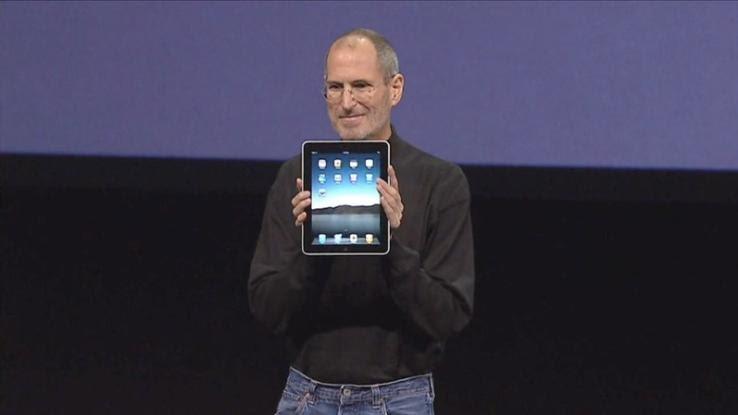
One competitor — Michael Dell, founder of Dell personal computers — addressed questions about how he’d handle the Apple company, and he famously replied that he would “shut it down and give the money back to the shareholders.” Thank goodness Jobs had the confidence to ignore such statements, or we might not have Apple products today.
No Such Thing as Heart or Brain Surgery — Sir John Eric Erichsen
Surgery is one of the oldest forms of healthcare in human history. Nonetheless, fantastically named British surgeon Sir John Eric Erichsen once suggested that in the future, “The abdomen, the chest, and the brain will forever be shut from the intrusion of the wise and humane surgeon.”

Needless to say, he was overly optimistic. Considering how much training doctors and surgeons need to care for patients, it’s no surprise that no technology has rendered surgery obsolete.
Sunny Skies Ahead — Michael Fish
On October 15, 1987, one British forecaster allayed public concern that a great storm was approaching the British Isles. He said, “Earlier on today, apparently, a woman rang the BBC and said she heard there was a hurricane on the way. Well, if you’re watching, don’t worry, there isn’t!” Naturally, he was wrong.

The Great Storm of 1987 hit England only hours after this poor prediction, resulting in billions of dollars worth of damage and the deaths of 19 people. The moral of the story: Don’t undersell a potentially dangerous, violently swirling cyclone with winds of 122 mph.
No Atomic Bombs — Admiral William Leahy
United States Admiral William Leahy was the senior-most officer in the US military during World War II. Nearly every plan of attack and every maneuver was planned by or approved by Leahy. He held some admirable beliefs concerning the use of atomic weapons — namely his prediction that US military forces would never use a nuclear bomb.
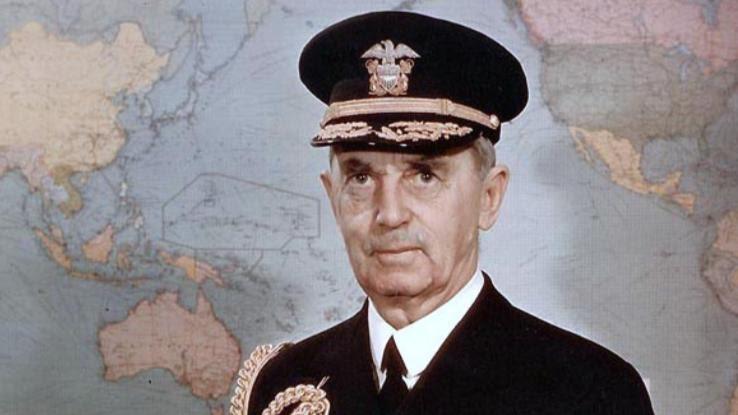
Sadly, the experienced officer was proven wrong on August 6th, 1945. That was the day that an American B-29 bomber plane released “Little Boy,” an atomic weapon that exploded with the force of over a dozen tons of TNT.





